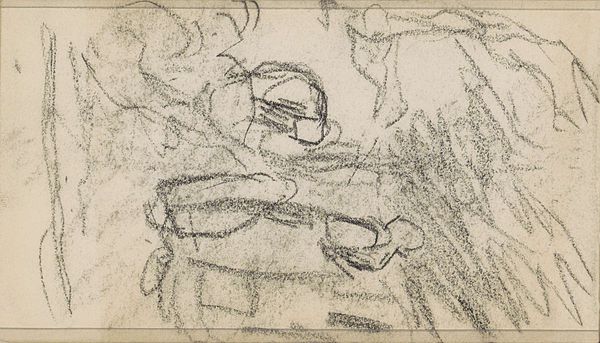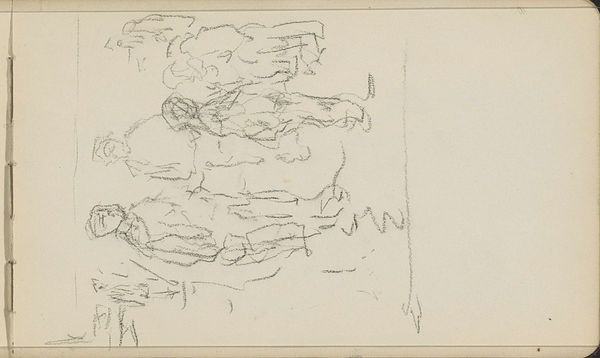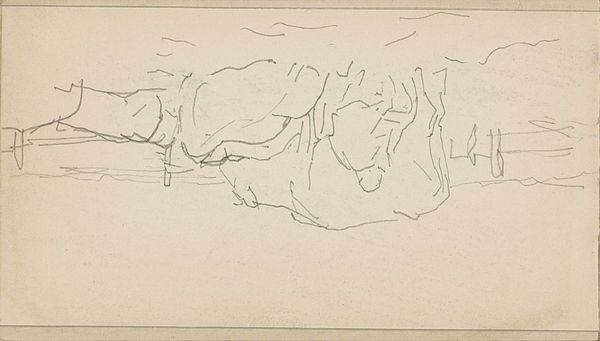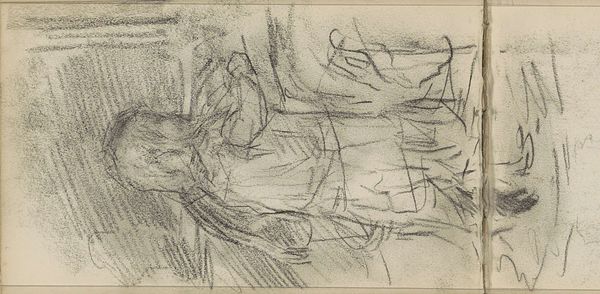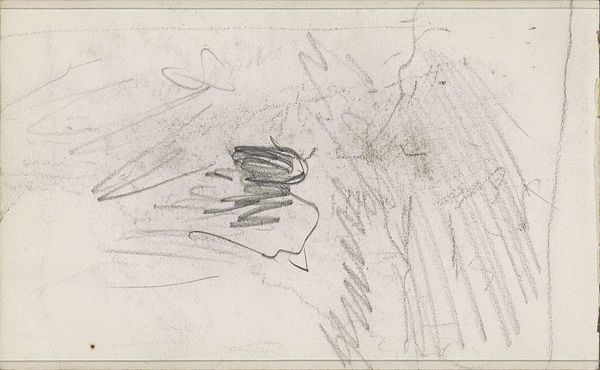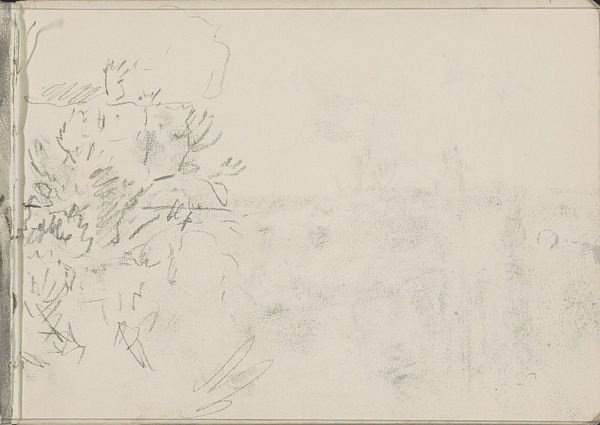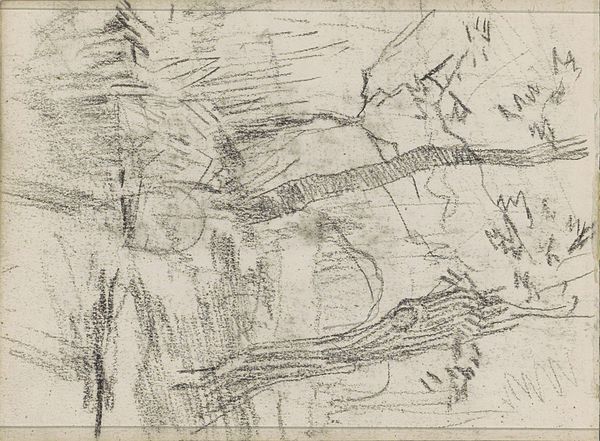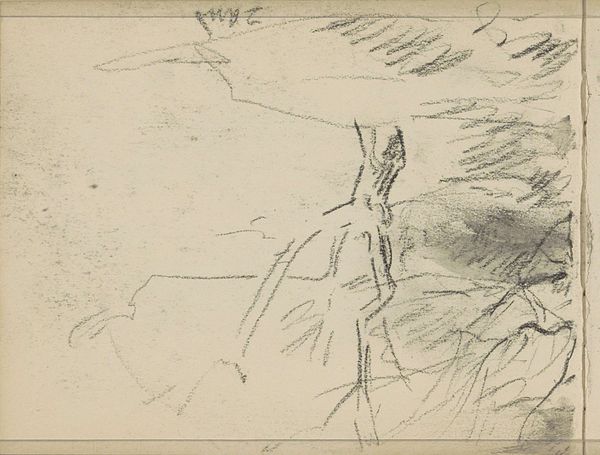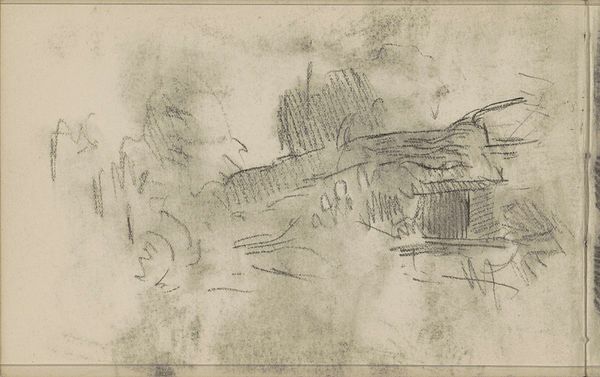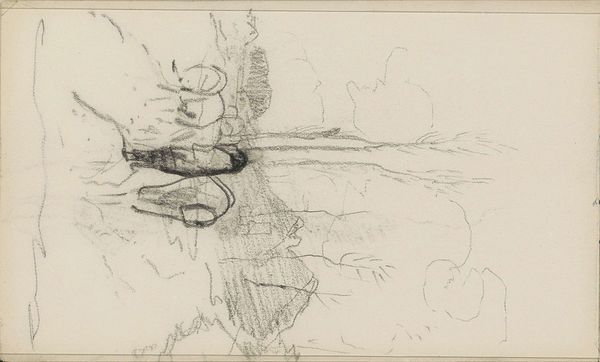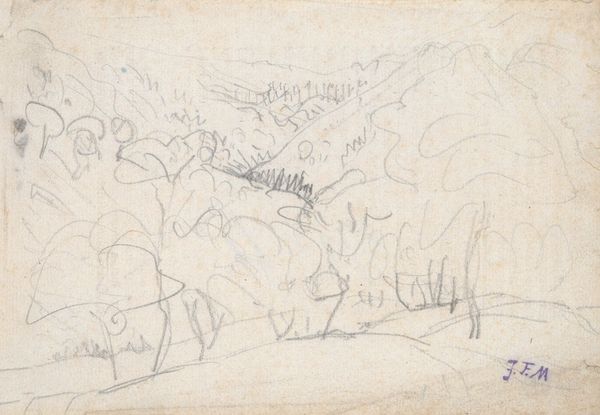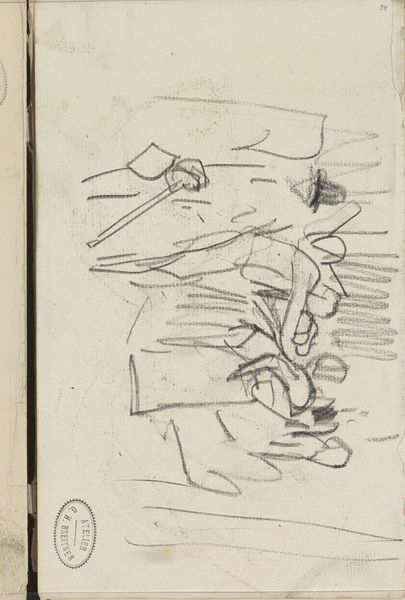
drawing, pencil
#
drawing
#
toned paper
#
light pencil work
#
dutch-golden-age
#
impressionism
#
landscape
#
personal sketchbook
#
idea generation sketch
#
sketchwork
#
ink drawing experimentation
#
pen-ink sketch
#
pencil
#
sketchbook drawing
#
sketchbook art
#
realism
#
initial sketch
Copyright: Rijks Museum: Open Domain
Editor: Here we have "Landschap," a pencil drawing on toned paper by Anton Mauve, created sometime between 1848 and 1888. It's currently housed at the Rijksmuseum. It feels like a preliminary sketch, something captured quickly in a personal sketchbook. What catches your eye about it? Curator: Well, viewing it through a historical lens, it's interesting to consider the role of landscape sketches like this in the broader context of 19th-century Dutch art and its relationship with the public. Landscape painting had become a dominant genre, often used to promote national identity. How might a humble sketch like this fit into that landscape, so to speak? Editor: That’s interesting; I wouldn't immediately associate it with national identity because of its understated nature. Does the act of sketching itself, even without grand pronouncements, play a role? Curator: Absolutely. Consider the burgeoning art market and the rise of impressionism. Artists increasingly sought to capture fleeting moments, personal impressions. A sketch like this, quick and intimate, becomes a valuable object precisely *because* it shows the artist's process. It offers a glimpse into their private vision, which then circulates publicly, shaping perceptions. Editor: So it's not just about depicting the land, but about making visible the *artist's encounter* with the land? Almost a form of documentation? Curator: Precisely! And who gets to decide what’s worth documenting? The art market, the museum… those are powerful institutions shaping what we consider "national identity." Notice how even a seemingly simple drawing can be loaded with cultural weight. Editor: I hadn’t thought about a sketch carrying that kind of weight before. So, it’s less about the actual landscape and more about the machinery around showing the landscape, or promoting this vision of national identity. Curator: Exactly! It reveals so much about how art is produced, circulated, and given meaning. What's been your biggest take away? Editor: That there’s always another institutional force that comes into play when the artist goes from creating to sketching something quickly like that to when its available to a broader public like it is at the Rijksmuseum.
Comments
No comments
Be the first to comment and join the conversation on the ultimate creative platform.
